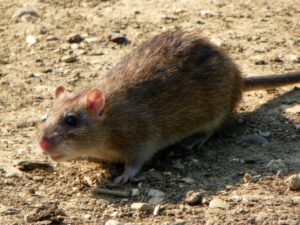This week President Biden received the report he commissioned on the origin of SARS-CoV-2. As I predicted three months ago, nothing was learned, because to find the origin of the virus it is necessary to conduct extensive wildlife surveys. Consequently this week I would rather write about a new study that identified coronaviruses in rodents.
Bats receive a great deal of attention because they harbor multiple coronaviruses (as well as many other viruses). Rodents receive far less attention, undeservedly so, because they constitute 40% of mammalian species (compared with 20% for bats), are known to host zoonotic viruses, and have frequent contact with humans. The human coronaviruses OC43 and HKU1, ubiquitous agents of the common cold, are thought to have originated from rodents.
To address gaps in our knowledge about coronaviruses that infect rodents, samples were obtained from 297 individuals animals representing eight species in three municipalities in the south of China. Viral RNA was extracted from oral and anal swabs and screened for coronavirus (CoV) RNA by RT-PCR using universal primers. Thirty-five of 297 rodents were found to harbor CoV RNA, most of them from the brown rat, Rattus norvegicus (pictured). Most interesting was that 34 of the 35 RNA positive rodents were captured in hotels and passenger stations. Just one positive animal came from a bamboo rat farm where animals are raised for food.
Unfortunately the authors were not able to recover infectious virus in cells in culture; however only primate cells, not rodent cells were used, possibly explaining this failure.
Whole genome sequencing was done for three distinct CoVs obtained from brown rats. The genome of RCoV-GCCDC3 has 96% similarity to the China Rattus CoV HKU24, while RCoV-GCCDC5 is 97% identical to the Luchang Rn rat CoV (LRNV), a recombinant virus identified in Zhejiang Province. RCoV-GCCDC4 has low similarity to known CoVs and appears to be a novel isolate.
Phylogenetic analysis reveals that RCoV-GCCDC3 and 4 belongs to the Betacoronavirus genus lineage A, while RCoV-GCCDC5 belongs to the Alphacoronavirus genus. Betacoronavirus lineage lineage A also contains the human CoVs OC43 and HKU1.
The predicted spike protein of RCoV-GCCDC4 was found to contain a polybasic cleavage site, RARR, between the S1 and S2 regions. Cleavage of such sites by furin proteases may enhance virus entry into cells. SARS-CoV-2 is the only known member of Betacoronavirus lineage B that possesses a polybasic cleavage site. RCoV-GCCDC4 also appears to be a recombinant virus as it harbors sequences similar to both MHV-1 (mouse hepatitis virus, identified in mice in 1949) and LRNV. The CoVs are known to undergo extensive recombination and this finding further emphasizes its potential to create novel viruses.
Perhaps the most important finding from this survey is that many brown rats were positive for CoV RNA. This species inhabits residential and indoor areas and has frequent contact with humans. It will be important to determine if the spike protein identified in this study can bind human cells and allow virus entry. Also essential is to determine if virus can be recovered from the full length genome sequences and if so whether the virus can reproduce in human cells. Such experiments address the pandemic potential of rodent CoV.
These findings also underscore the need to conduct more extensive virus surveillance at the human-livestock-wildlife interface to identify potential zoonotic pathogens.


Do these rats have the right receptor for Sars-Cov?
Is it the MHV strain that infects these rodents?
Is the permissivity factor there for these animals?
Rodent to human transmission!
Pingback: Catturati in hotel e in stazioni passeggeri | Irresistibili
This exemplifies the need for comprehensive surveillance for pathogenic agents that may be zoonotic risks. Ramping up R&D in eDNA and eRNA technology might be time and labor saving. A prototype sampling and monitoring protocol for eRNA Rabbit hemorrhagic disease virus (RHDV), a positive-strand RNA Lagovirus, was used in a study in Europe. And used for bat guano, yes?